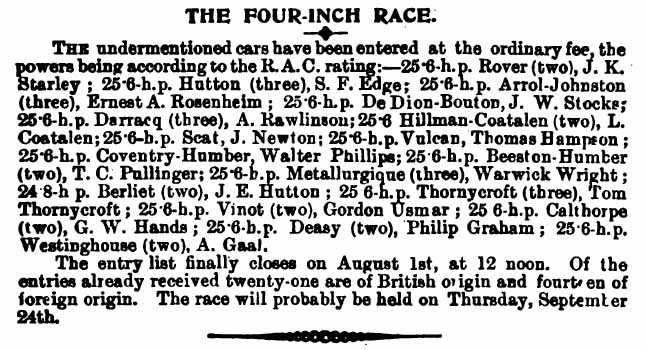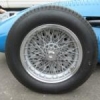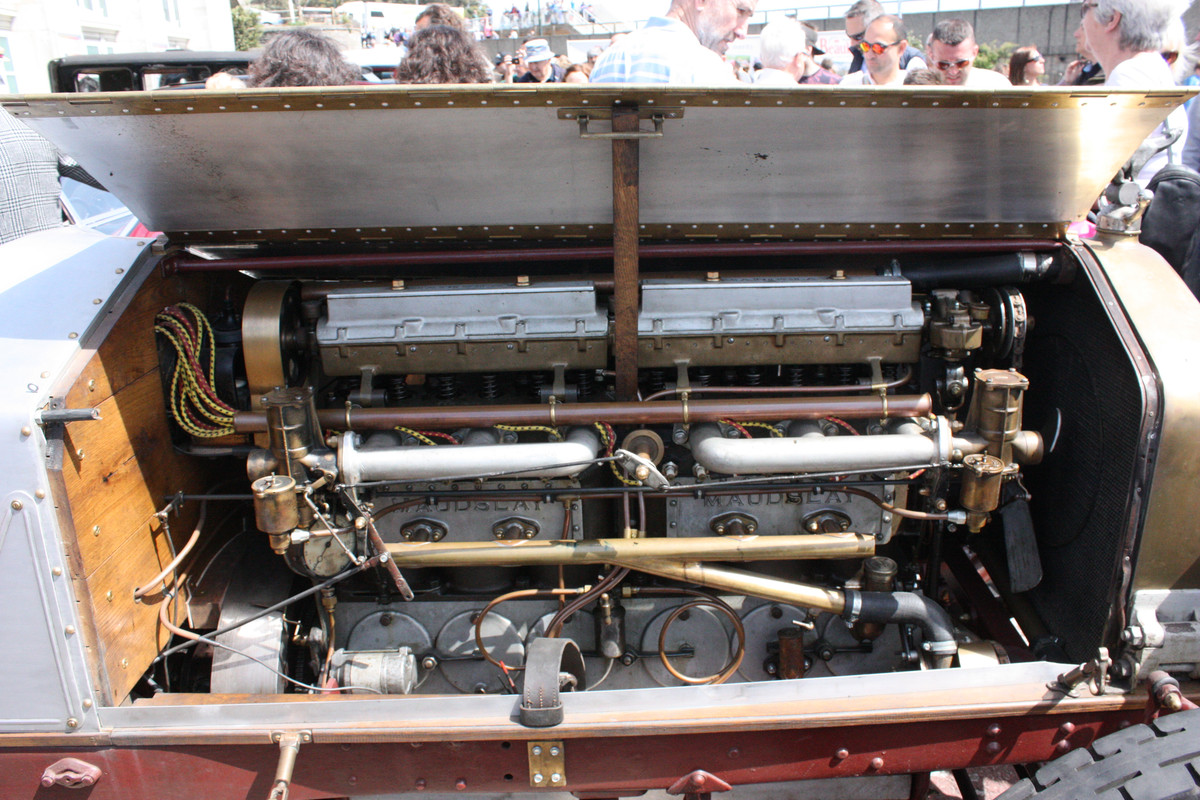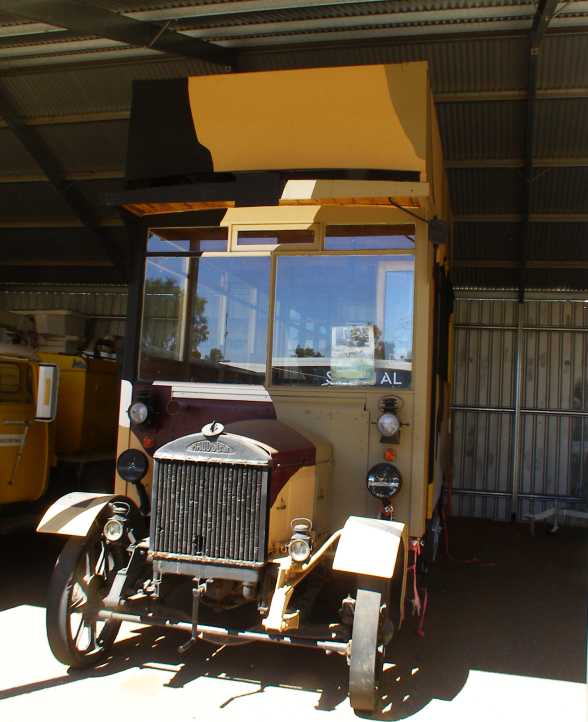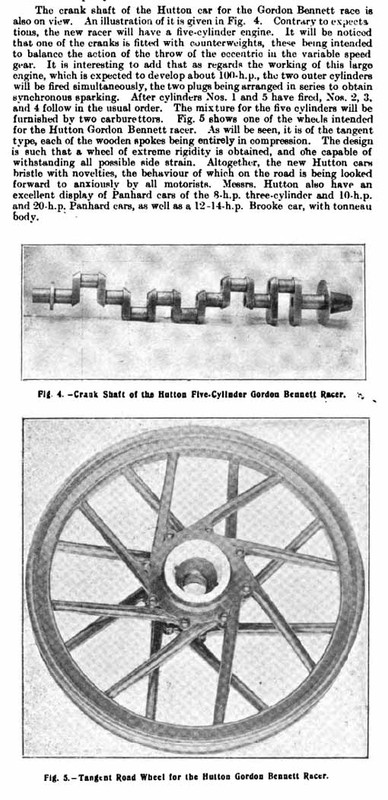The 1908 Tourist Trophy was won by a four-cylinder Napier, thinly disguised as a "Hutton" - the usual explanation seems to be that Napier (and especially Edge) vehemently and very outspokenly promoted their six-cylinder models, so that they didn't want any publicity connected with a successful four, which already sounds odd, but given Edge's somewhat contentious nature it does seem to make sense, sort of. However, now I find in period sources that it was an "open secret" that the Hutton was, in fact, a Napier, and that the winning car was even entered by Edge himself, so the question is: why all this camouflage in the first place? Also, the rules for the Tourist Trophy do not seem to have excluded four-cylinders at all, as Gerald Rose quotes "... for cars of not less than four cylinders..." (or words to that effect), so why didn't they simply build a six for the TT (four inches then 'translating' to something like three and a quarter)? It didn't have to do with Napier's withdrawal from racing, either, as that was announced only on the eve of the Manx races, and reputedly was mainly a reaction to the fatal accident at the Bank Holiday Brooklands meeting, about a week after the closing of the entry list for the TT (for which, it seems, Edge's Hutton was the very first entry anyway, so already "in the books" for several months).
The other part of the question would be, why Hutton in particular? I can't find any connection between Hutton and Napier, in fact Jack Hutton was very much a rival of Napier in every sense: having raced a Panhard-Levassor or two in continental events earlier in the decade, he had closed down his production line of mostly small cars several years before, and was now dealing (exclusively, it seems) with expensive foreign cars such as P-L, Mercedes and especially Berliet for whom he was concessionaire. He also raced various Berliets and a former Grand Prix Mercedes at Brooklands, and very successfully too, depriving Napier of a win here and there - what was his interest in the whole episode, since he didn't restart the Hutton production on the back of the TT success and, in fact, accepted a post at Siddeley before the year was out? The only faint "link" I can make out is that he fitted his Mercedes with a tube radiator reminiscent of the one on the Napier "Samson".
Can anyone offer an explanation?







